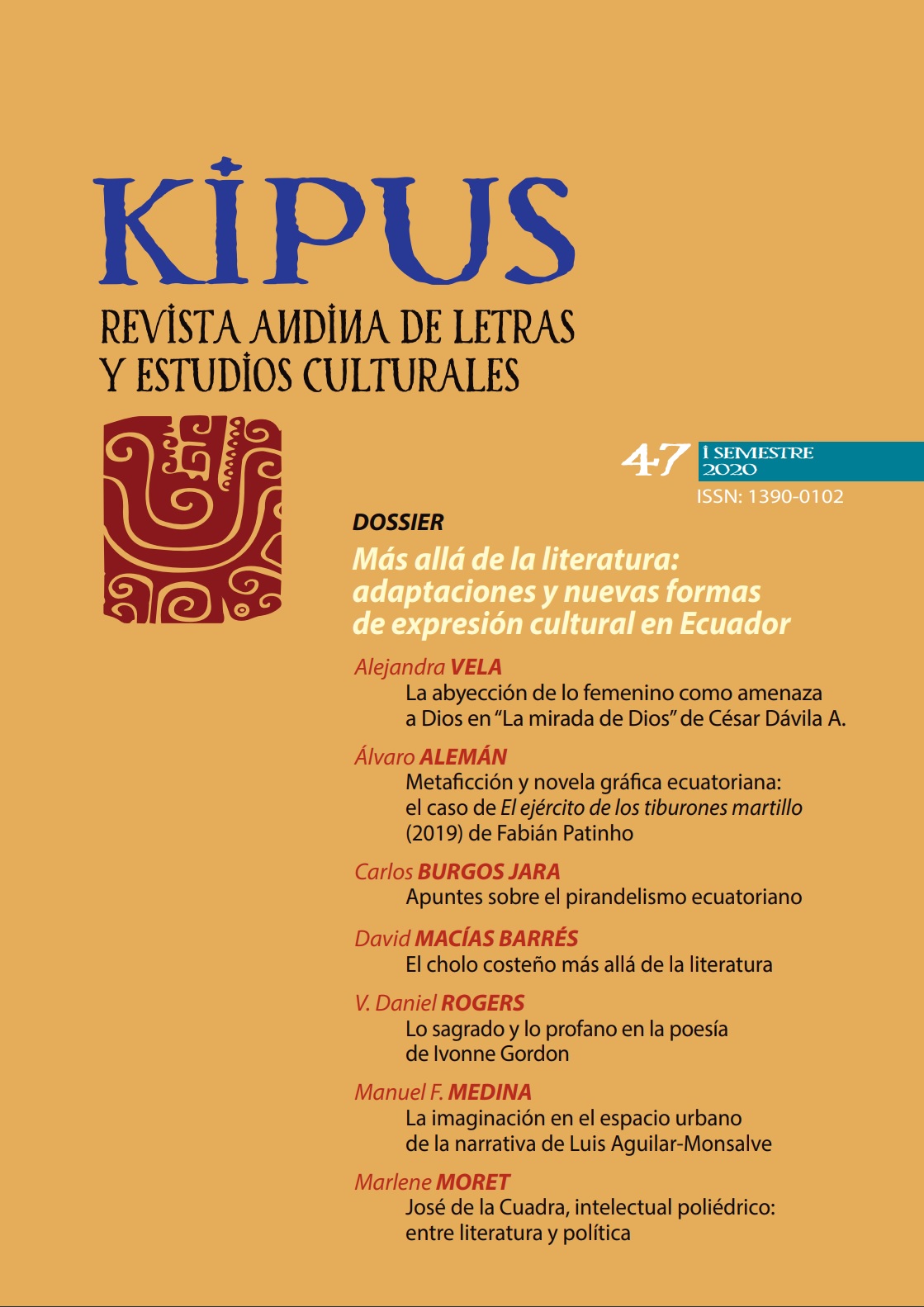Metafiction and Ecuadorian Graphic Novel: the Case of El ejército de los tiburones martillo (2019) by Fabián Patinho
DOI:
https://doi.org/10.32719/13900102.2020.47.2Keywords:
Ecuador, graphic novel, metafiction, literary, history, Fabian Patinho, El ejército de los tiburones martillo, art historyAbstract
Fabián Patinho’s El ejército de los tiburones martillo (2019) (An Army of Hammerhead Sharks) consists of metafictional critique, a mode of novel writing that has surfaced often in Ecuadorian Letters in the last decade. The article holds that Patinho’s text works as a means of legitimizing the emergent field of the Ecuadorian Graphic Novel; that is to say, it presumes to establish a double origin as befits this hybrid medium. On the one hand, the graphic aspects of the text seek validation in the mythic mural painting produced by Camilo Egas for the New York World Fair of 1940. The literary side of things seeks support in the Spanish translation done by Francisco Alexander of Walt Whitman´s Leaves of Grass. This revisionist history of Ecuadorian literary an art history works to establish a new version and vision of Ecuadorian High Culture that can be formulated as a reading pact (that includes a gendered reading) between a new and skeptical, group of readers and a new authorial, self-referential sensibility.
Downloads
References
Baurin, Camille. 2012. “Le metacomic. La réflexivité dans le comic book de superhéros contemporain”, Disertación doctoral, Université de Poitiers. http://neuviemeart. citebd.org/IMG/pdf/These.pdf.
Carrera Andrade, Jorge. 1950. “La llave de fuego”. En Aquí yace la espuma. París: Presencias Americanas.
De Velasco, Juan. 1946. Historia del Reino de Quito en la América Meridional. Quito: Casa de la Cultura Ecuatoriana.
Engels, Federico. 2014. La revolución de la ciencia del Sr. Eugenio Dühring o el Anti-Duhring. Colección Clásicos del Marxismo. Fundación Federico Engels. https://www.fundacionfedericoengels.net/images/PDF/engels_antiduhring_interior.pdf.
Homero. 2014. La Odisea. Traducido por José Manuel Pabón Suárez De Urbina. Madrid: Gredos.
Lee, Felicia R. 2006. “Columnist accuses Crichton of Literary Hit-and-Run”. The New York Times, 14 de diciembre. https://www.nytimes.com/2006/12/14/books/14cric.html.
Montalvo, Juan. Capítulos que se le olvidaron a Cervantes. Ensayo de imitación de un libro inimitable. Biblioteca Virtual Universal. https://www.biblioteca.org.ar/libros/132353.pdf.
Newberry, Wilma. 1973. The Pirandellan Mode in Spanish Literature from Cervantes to Sastre. Nueva York: State University of New York Press.
Ortega y Gasset, José. 2005. “La deshumanización del arte”. En Obras completas. Madrid: Fundación José Ortega y Gasset / Taurus.
Palacio, Pablo. 1927. Un hombre muerto a puntapiés (cuentos). Quito: Universidad Central del Ecuador.
Patinho, Fabián. 2019. El ejército de los tiburones martillo. Quito: El Fakir.
Sobejano, Gonzalo. “La novela poemática y sus alrededores”. En Cervantes Virtual. http://www.cervantesvirtual.com/obra-visor/la-novela-poemtica-y-sus-alrededores-0/html/02167f8e-82b2-11df-acc7-002185ce6064_2.html#I_0_.
Valdano, Juan. 1999. La prole del vendaval: sociedad, cultura e identidad ecuatorianas. Quito: Abya-Yala.
Waugh, Patricia. 1984. Metafiction-The Theory and Practice of Self-Conscious Fiction. Nueva York: Routledge.
Downloads
Published
How to Cite
Issue
Section
License

This work is licensed under a Creative Commons Attribution-NonCommercial-ShareAlike 4.0 International License.







.png)
